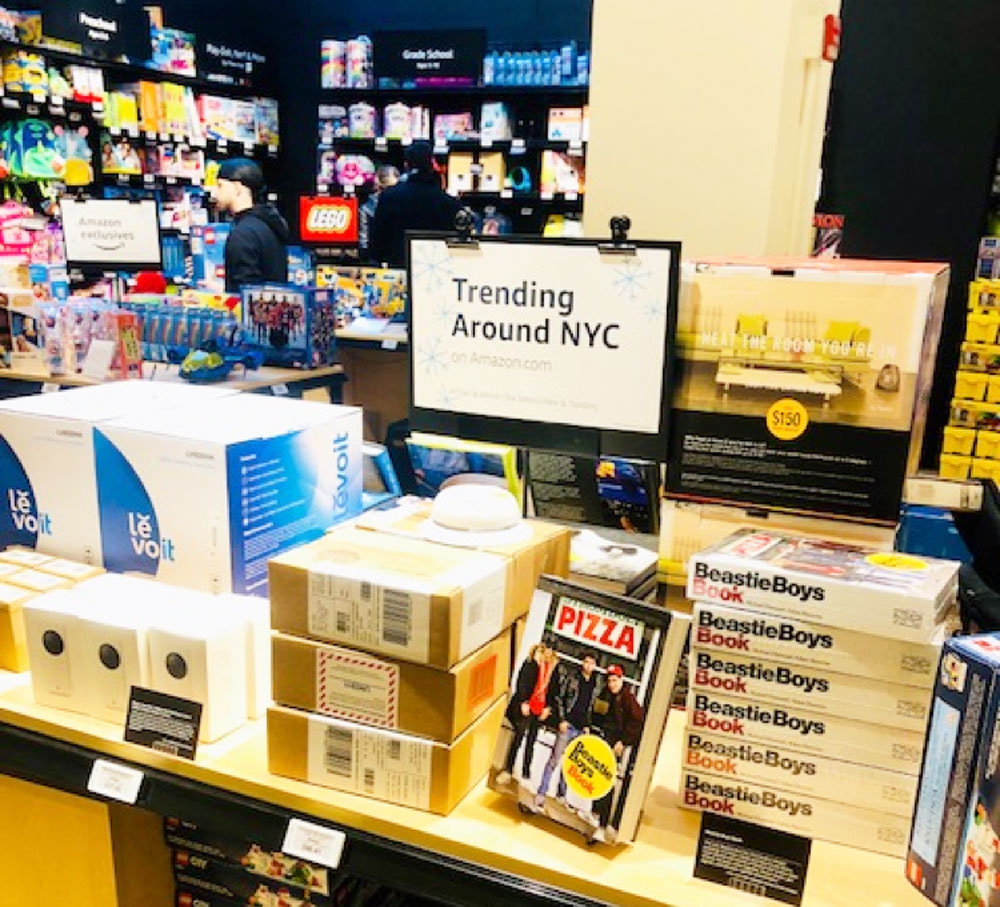What Can Retailers Learn from Amazon 4-Star Stores?
Amazon’s latest brick-and-mortar adventure – “Amazon 4-Star” recently opened its third store, this one in Berkeley, California. The store format, containing an assortment of merchandise rated 4 stars or higher by customers, is new for Amazon and looks to be something we’ll continue to see expand across the country. After visiting the New York City SoHo location, the first of the stores to open back in September, I wondered – what can retailers learn from these new concept stores?
Access to Customer Reviews
Amazon has over the years collected an immense number of product reviews from its customers, which ultimately allow for this store concept to work. We’ve all been online and balked at the prospect of buying a product when we noticed that the customer reviews weren’t great, so inherently shoppers will be more confident of product quality when they walk in the door. Amazon, however, doesn’t stop there and puts customer reviews front and center in the store.
The store replaced traditional shelf price tags with digital tags that feature the price and star rating of the product. Near the products, they also feature real customer reviews. With customers placing more importance on reviews, the visibility of this information provides the much-needed “moment of truth” to consumers who would otherwise have pulled out their phones to find the information. It essentially mimics the process that a customer will go through before purchasing a product online but allows the retailer to be more selective in the information that is immediately shown to their customers. With 72% of shoppers taking action only after reading a positive review, these signs clear that hurdle for the retailer.
Consistent Pricing Across Channels and Driving Loyalty Signups
The price of products in the Amazon 4-Star store will be updated in real-time to match online pricing, typically close to the manufacturer’s suggested retail price. The digital price tags for each product show the original price as well as the Prime member price, while also displaying the savings associated with being a Prime member.
In effect, this accomplishes two key things for retailers. First, it ensures that they won’t get complaints about price discrepancies across channels. Consumers today are looking for consistent experiences no matter how they shop and having to ask for a price match when the online price is cheaper than the in-store price creates a negative experience that can hurt the retailer. Secondly, this pricing method gives incentives for people who aren’t Prime members to join on the spot, as they can get a free 30-day trial and instantly receive the Prime discount price. While Amazon clearly isn’t struggling with getting people to join Prime, having over 100 million members, retailers should take notice. Driving loyalty signups should not simply be a store associate spiel during checkout, but a clear illustration of the benefits throughout the shopping experience.
Curated Displays within the Amazon 4-Star Store
Digital-first retailers have the luxury of large online data sets to apply to their customers’ in-store experiences. Amazon uses this data to curate the displays and sections within their stores. Areas within the SoHo store include:
- “Most-Wished For” – using data from customer wishlists
- “Trending Around NYC” – using data from local customers
- “Frequently Bought Together” – taken from their checkout data
An important cue for retailers to take from Amazon in this instance is the shift towards using online product and customer data as an inspiration and a focus for the physical store layout. While some of these sections are targeted for specific customer sets, all of them are driven by actual customer data – resulting in what feels like a personalized experience that would typically be given by a local shop rather than a large, global retailer. Traditional retailers still struggle with using insights from their online data in their brick-and-mortar channel, but this represents a huge opportunity to innovate and create unique in-store experiences built specifically for local customers
Overall, it remains to be seen how successful the Amazon 4-Star store will be. However, pairing the expansion of this store format with the plans to open 3,000 Amazon Go stores within the next 3 years shows that Amazon’s disruption is no longer limited to what they do online. Retailers will continue to watch and learn, and consumers will continue to reap the benefits of improved customer experiences along the way.
Coauthor and contributions by Maddie McCormick




